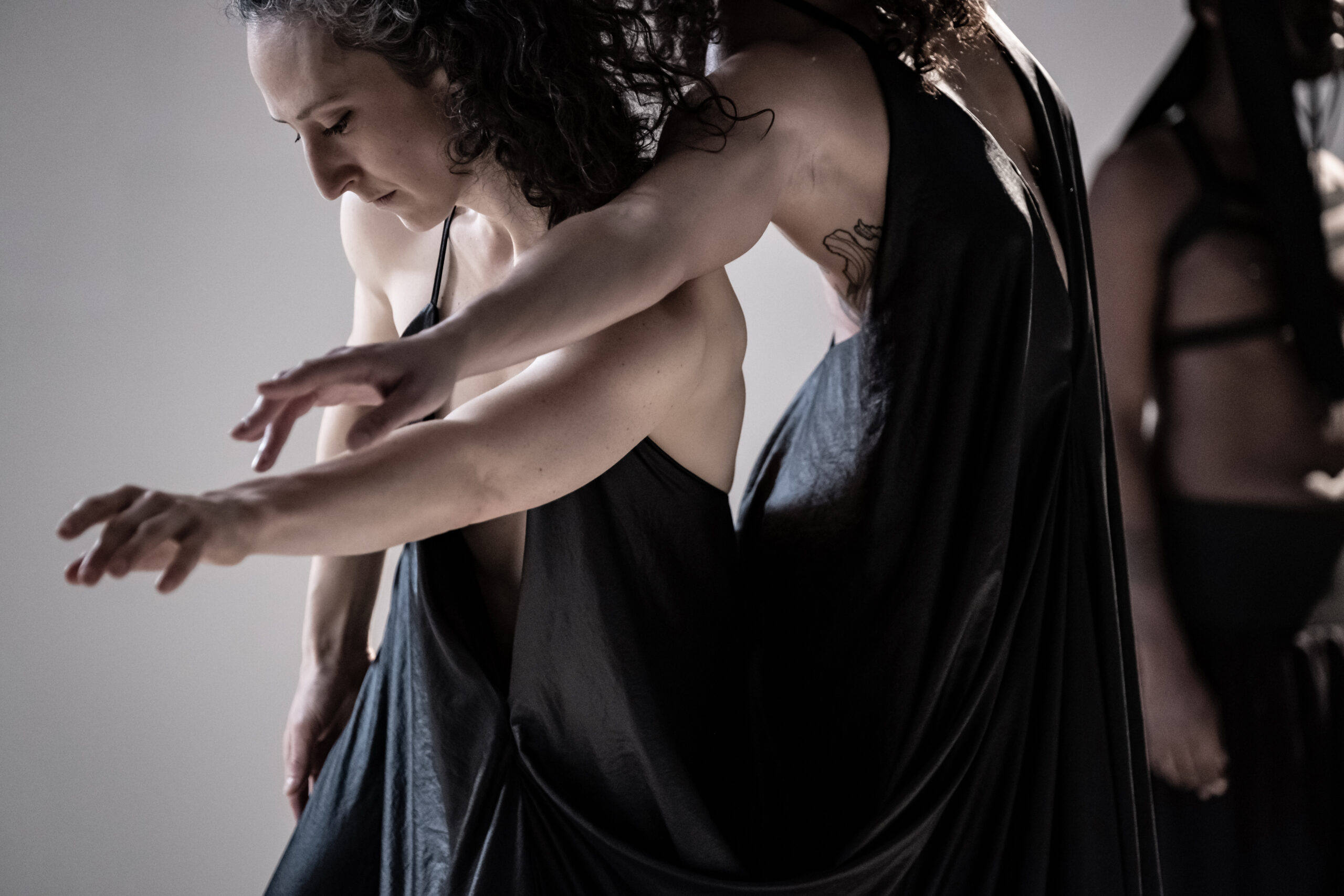Élian Mata’s new show will be available to experience until Nov. 27
Élian Mata presents his new show Trajectories at the Montréal, arts interculturels (MAI) theatre from Nov. 24 to 27. Mata’s piece involves eight interpreters, each performing choreography inspired by an archetype that represents human defaults.
Trajectories explores diversity through the lens of mythologies and archetypes. Six characters are interpreted by eight performers. They each stand on their own small stage while the audience is spread out in the theatre space, a technique Mata used to recreate the feeling of an exhibition. For him, this organization of space is a comment on the place given to marginalized groups in modern society. “The initial idea was a proposition inspired by museums, inviting the audience to come and watch living art works that are still relegated to the idea of the museum. We accept them when they are at a distance and in the context of an exhibition since it secures us, but we are not ready to integrate them in society,” he said.
Mata’s creative process for Trajectories started with the conception of dresses and garments related to each of the themes he wanted to examine. The piece was then created with those costumes in mind. Mata recalled being passionate about clothing ever since he was young. He explained that as a teenager, he would draw dresses, and later dreamed of entering fashion school.
The artist started creating his own dance pieces in 2015, with his first show titled Forêt. This work reflected on nudity and diversity. For Mata, Trajectories is the continuity of this piece. In fact, Forêt ended with the performers putting on clothes after they had been naked for the whole performance. With Trajectories, Mata continues his reflections on human nature, but this time performers are dressed, with each piece of clothing having a specific meaning.
Each of the six personas has a specific composition combining movement patterns and sometimes sounds or words developed in collaboration between Mata and the performers. Therefore, all the choreographies are unique and independent from each other. Mata explained that the process of creating this piece started with visual inspirations he had in mind. “I start with images and these images come alive,” he said.
The piece includes two duets respectively symbolizing the archetypes of Anima and Animus, each adapted in a dance duet. Anima, performed by Anne-Flore de Rochambeau and Gabrielle Surprenant-Lacasse, examines the idea of a masculine side that can be found in women. Jontae McCrory and Jérémie Brassard interpret Animus, the feminine part found in men. The terms Anima and Animus were developed by Psychiatrist Carl Jung. For Mata, the idea of categorizing male and female character traits is absurd, and these duets confront this. “They are two and they symbolize one person. They confront each other, they fight, but they also accept each other and live together,” he explained. For Anima, the two interpreters perform together in a dress made for two.
Narcissus is another character, performed by Stevens Simeon. Mata believes narcissism is very much present in our current culture, inspiring him to reference the tale of Narcissus in this solo piece. The large gold reflexive cube placed on Simeon’s stage symbolizes the Greek figure’s drowning as he stared transfixed at his reflection in the water.
The choreographer also included the figure of Androgyny, who he describes as a ghostly presence, one that is ignored by all. Interpreted by Thomas Wilkinson Fullerton, this character occupies the performance space without having his own stage to stand on for most of the presentation. With this dance piece, Mata comments on the marginalization of people like Androgyny in our society.
In the centre of a black box stands Mohawk performer Barbara Kaneratonni Diabo. The artist performs solo dance based on the greeting Skennen’kó:wa, which translates to “do you carry the great peace?” in Mohawk. In English, it translates to “how are you,” though this doesn’t carry its spiritual or historical significance. “For me, it was evident that, through all the themes I touched on, I had to talk about the problematic relationship humans have with nature and the current ecological problems. So, I had to work with an Indigenous artist, because I have always been fascinated by the link they maintain with nature,” said Mata. This dance performance comments on the current relationship humans share with nature. “If we considered the Earth at the same level as us, we would nurture a different relationship to it,” he said.
The sixth choreography is inspired by Magna Mater, or the Great Mother, an archetype that relates to fertility in Greek mythology. Jacqueline van de Geer embodies this persona. Mata wanted to question the roles related to pregnancy and motherhood that have historically and continue to be imposed on women, and the burden it generates for them. “The dress she wears is a reference to the weight of this historic iconography. She suffocates because of all these roles,” explained Mata.
Each of the performances have their own soundscape and lighting. Through a variety of visual organizations and movement propositions, Mata encourages visitors to reflect on diversity. “I invite the audience to take a path to meet with the other. This ‘other’ is a manifestation of the human psyche, and some character traits or personalities that still today are perceived in the wrong way.” In the MAI’s entrance, audience members can read a preamble to the show written by Mata in which he explains the richness he observes in human differences. “Pluralism generates a healthy evolution of cultures because a society is not petrified in time, it evolves by feeding itself with exchanges and the creativity of people who have known how to think differently,” wrote Mata.
Trajectories is presented at the MAI at 3680 Jeanne-Mance St. Tickets are available through their website.
Photo courtesy of Vanessa Fortin and David Wong




